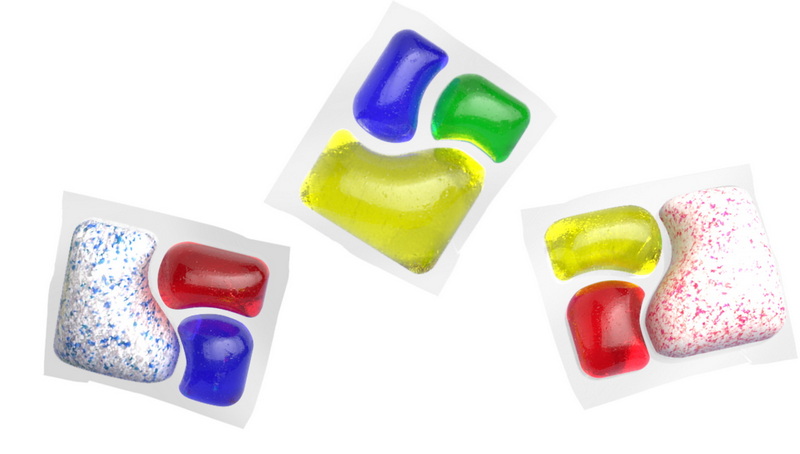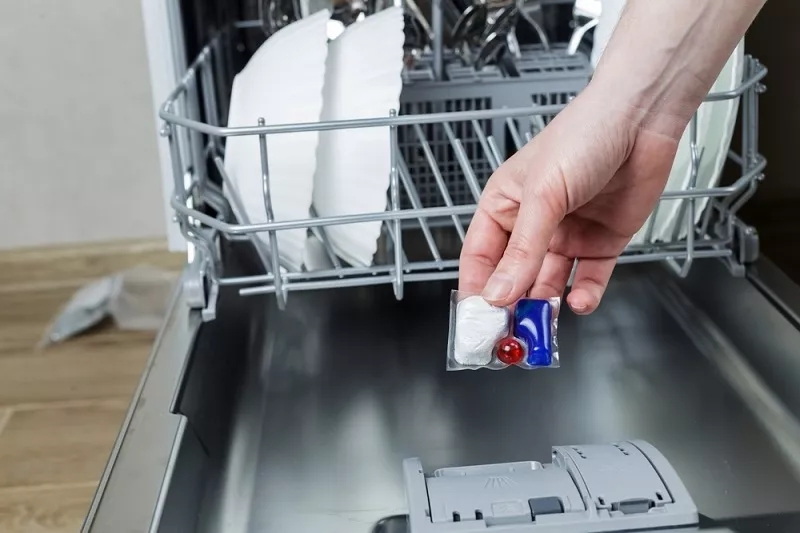Dongguan UFine Daily Chemical Co.,Ltd.
- All
- Product Name
- Product Keyword
- Product Model
- Product Summary
- Product Description
- Multi Field Search
Views: 222 Author: Tomorrow Publish Time: 10-22-2025 Origin: Site











Content Menu
● Understanding Dishwasher Pod Ingredients
● Types of Dishwasher Pods and Safety Considerations
>> 3. Natural and Eco-Friendly Pods
>> 4. Sensitive Skin or Hypoallergenic Pods
● Key Factors to Determine Dishwasher Pod Safety
>> Impact on Dishwasher Machines
>> User Safety
● Popular Safe Dishwasher Pod Brands (Examples)
● How to Use Dishwasher Pods Safely
● Environmental Considerations of Dishwasher Pods
● FAQ
>> 1. Are all dishwasher pods harmful to health?
>> 2. How can I tell if a dishwasher pod is environmentally friendly?
>> 3. Can dishwasher pods cause skin irritation?
>> 4. Is it safe to use dishwasher pods with all dishwasher models?
>> 5. What should I do if a child or pet ingests a dishwasher pod?
Dishwasher pods have become a popular and convenient way to clean dishes. These pre-measured packets contain a mixture of detergents and additives that promise a spotless clean without the hassle of measuring and pouring liquid or powder detergents. However, with increasing concerns about health, environment, and machine safety, a key question arises: Which dishwasher pods are safe to use? This article explores the factors that affect the safety of dishwasher pods, the types of pods available, and what to look for when choosing a product to ensure safety for your family, dishwasher, and the environment.

Dishwasher pods contain various components such as surfactants, enzymes, builders, bleaching agents, and sometimes fragrances or dyes. These ingredients work together to remove food, grease, and stains from dishes. However, not all ingredients are created equal in terms of safety.
- Harsh Chemicals: Some pods contain phosphates, chlorine bleach, or other aggressive chemicals which may pose risks to health or damage sensitive dishware.
- Enzymes: Typically safe and effective, enzymes break down proteins and starches but can sometimes cause skin irritation.
- Fragrances and Dyes: Added for scent and appearance, these can trigger allergies or irritations in sensitive individuals.
- Biodegradability: Some ingredients degrade naturally, while others persist in the environment and contribute to pollution.
Understanding the contents helps identify safer options that balance cleaning power with health and environmental concerns.
These generally contain synthetic chemicals including phosphates and chlorine bleach. While effective, they are less environmentally friendly and may pose health risks on contact and through the release of residues on dishes. Phosphates in particular can cause the formation of hard water deposits in dishwashers, which over time decrease machine effectiveness and longevity. There is also an increased risk of chemical residues remaining on dishware, which may cause irritation upon contact with food or skin.
Phosphates, previously common in dishwasher detergents, have been linked to water pollution causing algae blooms and ecosystem disruption. Many brands now offer phosphate-free pods, which are safer for aquatic life and often milder on skin. These pods use alternative builders such as citrates or zeolites to soften water and enhance cleaning. Phosphate-free formulas are becoming the norm in regions with strict environmental regulations, balancing efficiency with ecological safety.
Made from plant-based or biodegradable ingredients, these pods avoid synthetic chemicals, dyes, and fragrances. They focus on reducing environmental impact and minimizing irritation risks. However, they may sometimes be less powerful on tough stains or require longer wash cycles to achieve optimal cleaning results. Despite this, many manufactures continuously improve formulations to rival the cleaning power of conventional pods while maintaining a safer profile.
Formulated specifically to minimize allergens and irritants, these are ideal for users with skin sensitivities or allergies. They avoid fragrances, dyes, and harsh chemicals. These pods typically undergo dermatological testing and exclude contributors to irritation such as certain enzymes or sulfates. Their gentleness often makes them favorable for households with children or individuals prone to eczema or dermatitis.
Brands that clearly list their ingredients allow consumers to make informed decisions. Avoid mystery formulations that do not disclose chemical contents or only list vague categories. Transparency helps identify potential allergens or harmful substances and ensures accountability.
Look for certifications such as EPA Safer Choice, NSF, or eco-labels that validate product safety, biodegradability, and low toxicity. These third-party verifications indicate that the pod has met strict criteria for human health and environmental impact. Certifications often assess biodegradability, aquatic toxicity, and potential to cause skin or eye irritation.
Pods must have sturdy packaging to prevent accidental ingestion by children or pets, as the concentrated detergent is harmful if swallowed. Many pods come in resealable pouches or hard plastic containers. Child-resistant packaging is an important safety feature to reduce risks. Packaging should also protect pods from moisture and damage to maintain product integrity.
Safe pods should not cause buildup inside the dishwasher or damage seals, racks, or coatings. Some harsh detergents or abrasive ingredients can corrode metals or degrade rubber seals over time. Check for user reviews and manufacturer recommendations to ensure compatibility with your dishwasher model. Using recommended pods helps avoid costly repairs and preserves dishwasher lifespan.
Safe pods have reduced risk of skin irritation and respiratory issues during use. Proper handling and storage are important. Avoid contact with wet hands that can dissolve pods prematurely. Users with asthma or sensitivities should ensure good ventilation when running the dishwasher, as fumes from detergents can sometimes cause mild respiratory discomfort.

- Seventh Generation: Known for plant-based, biodegradable formulas without dyes or phosphates. They emphasize ingredient transparency and environmental responsibility.
- Method: Offers eco-friendly pods with clear ingredient lists and recyclable packaging. The brand focuses on safe formulations tested for skin safety.
- Ecover: Specializes in natural and phosphate-free options with recognized environmental certifications. They invest in sustainable packaging solutions.
- Mrs. Meyer's Clean Day: Products designed for sensitive users with plant-derived ingredients and essential oils. Fragrance choices are mild rather than overpowering.
- Dropps: Focuses on minimalism, compostable packaging, and phosphate-free ingredients. They provide clear information about ingredient sourcing and disposal.
These brands are often recommended for users looking for safe, effective, and environmentally responsible dishwasher pods. Testing multiple brands can help find the best balance of cleaning power and safety for your household needs.
1. Keep out of reach of children and pets. The pods look like candy but are highly toxic if ingested.
2. Store in a dry, cool place to prevent the pods from dissolving prematurely or leaking.
3. Follow the manufacturer's dosage instructions to avoid residue buildup or damage.
4. Avoid touching pods with wet hands to prevent breakage and skin exposure.
5. If skin contact occurs, rinse immediately and seek medical advice if irritation persists.
6. Dispose of empty packaging responsibly, especially if compostable or recyclable.
Additionally, always load dishes properly to maximize cleaning effectiveness and prevent pod dispenses from being blocked by large items. Ineffective rinsing due to blocked dispensers can leave detergent residues on dishes.
The environmental impact of dishwasher pods depends on their chemical makeup and packaging. Phosphates and non-biodegradable surfactants contribute to water pollution. Pods with plastic packaging increase waste. Choosing phosphate-free, biodegradable pods with compostable packaging reduces ecological footprint.
Water treatment facilities often struggle to fully remove certain chemicals found in conventional pods, resulting in accumulation in aquatic ecosystems. Using pods with safer ingredients reduces this pollution and protects biodiversity. Packaging innovations such as zero-plastic cardboard boxes or compostable pouches further reduce landfill waste.
Consumers should also consider energy and water use associated with pods. Some eco-pods require longer wash cycles or higher water temperatures, potentially increasing resource consumption. Balancing environment-friendly ingredients with efficient washing helps reduce overall impact.
Selecting safe dishwasher pods requires attention to ingredients, certification, packaging, and personal sensitivity. Conventional pods may provide strong cleaning power but often contain chemicals harmful to health and the environment. Phosphate-free and eco-friendly options balance efficacy with safety, making them preferred choices for conscientious consumers. Brands that prioritize transparency and natural ingredients offer reliable alternatives. By choosing wisely and handling pods carefully, you can maintain clean dishes while protecting your health, dishwasher, and planet.

Not all are harmful. Some pods contain mild, plant-based ingredients and avoid harsh chemicals, making them safer for skin and ingestion risks, especially when used properly.
Check for phosphate-free labels, biodegradable ingredients, and eco-certifications like EPA Safer Choice, Green Seal, or EU Ecolabel. Packaging made from compostable materials is another sign.
Yes, pods with strong enzymes, fragrances, or synthetic detergents can irritate skin on contact. Using gloves or choosing hypoallergenic pods can prevent this.
Most pods are compatible with standard dishwashers. However, check your manufacturer's recommendations, especially for high-end or sensitive models, to avoid possible damage.
Dishwasher pods are toxic if swallowed. Seek immediate medical or veterinary attention even if only a small amount is ingested. Keep pods locked away to prevent accidents.